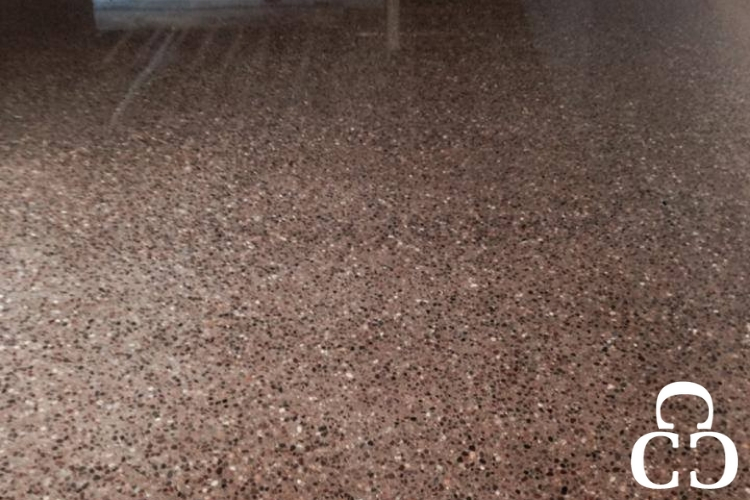
Polished concrete is an innovative flooring solution that can add a unique and vibrant element to any space.
Today’s blog will cover the basic knowledge every consumer should know including the process, levels, and polished concrete floors pros and cons.
What is polished concrete
Polishing concrete is a process of changing a traditional concrete surface into a desired finish that is both long lasting and attractive. It requires a mix of industry knowledge, experience and artistic expression.
The process starts with evaluating the condition of the existing floors by looking for cracks and blemishes, high and low spots, and other imperfections. If spotted, many of these issues can be solved in the next steps of the polishing process.
After evaluating the condition of the floors, you can begin rough grinding to prepare the surface for further polishing. Depending on the condition and density of the existing floors, it may take multiple passes to achieve the best results.
Once the grinding process is complete, apply a chemical hardener to help create a solidified and dense surface that is more resistant to wear and tear and provides extra protection against staining. After the hardener is set in place the final round of polishing can begin.
For added protection against grease, oil and other unwanted stains, apply a layer of a commercial stain-guard product.
Levels of polishing
There are typically four different levels of polishing on concrete floors. Depending on customer preferences, you can achieve a matte to a glass-like finish unique to your space.
Level 1
The first level results in a flat finish that gives your floors little to no clarity or reflection.
Level 2
Level 2 is a satin finish that produces a low-sheen finish where, in the right light, will give off little reflection.
Level 3
At level 3, your floors will have a semi-polished finish that will begin to shine and reflect the overhead lighting in your space.
Level 4
The last level is a highly-polished surface that produces a clear, reflective finish.
Pros and cons
Polished concrete flooring is one of the best solutions for many spaces including offices, restaurants, stores and more. Although it has many benefits, it is important to understand polished concrete floors pros and cons before installing them.
Polished concrete pros
Durability
Concrete floors are durable and highly resistant to anything from high foot traffic to heavy machinery. It is difficult to damage, scratch or chip.
Easy maintenance
There is little maintenance required to keep concrete floors looking new. Simply mop, wax, or seal any imperfections every few months.
Long-lasting
Compared to other flooring options such as carpet, wood, or vinyl, concrete flooring has an extremely long life. When installed properly, the life can be extended even longer.
Cost effective
Because of its durability, concrete floors rarely have to be replaced, ultimately saving you time and money. Depending on the level of complexity of the design that you choose, polished concrete typically costs less than $5 per square foot.
Polished concrete cons
Moisture
If not installed properly, moisture could penetrate your concrete and potentially create future issues.
Discomfort
The strength and durability of concrete floors work as both a positive and negative. Because concrete is so hard, it can become quite difficult to stand on for a long period of time. Adding area rugs or pads to more high-traffic areas can help add an element of comfort to your space.
Cold
If you reside in an area with harsh winter temperatures, cold flooring could become an issue. However, radiant heating cables can be installed to help retain the heat.
Overall, we covered polished concrete floors pros and cons, levels, and the basic process. For more information or to schedule your next project, contact the professionals at Custom Concrete Creations.
